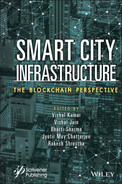5
Registration of Vehicles With Validation and Obvious Manner Through Blockchain: Smart City Approach in Industry 5.0
Rohit Rastogi1*, Bhuvneshwar Prasad Sharma2 and Muskan Gupta3
1Dept. of CSE, ABES Engineering College, Ghaziabad, India
2Dept. of IT, ABES Engineering College, Ghaziabad, India
3B.Tech. CSE Final Year, ABES Engineering College, Ghaziabad, India
Abstract
Blockchain technology replaces centralized applications to distributed computing. Modern economy is estimated by the place of motor transport in the infrastructure of the national economy. An automobile registration system is a unified information system. This information system takes care of every information of an automobile registration. It is administered by a national registry entity and has access by other government and non-government of services that handles automobile information. Cyber-physical system (CPS) is defined as the combination of computation and physical process. It is mainly used in ICT section. It is also focused on resolving the problems related to authors of the data regarding transparency, media, and storage problems by technical handling.
The presented manuscript uses all above concepts at one place and integrate them to build a useful application. The presented frame allows car manufacturers, owner, repairing companies, and insurance agencies to register and add new entries for cars in a simple method. Four different smart contracts control block share updated in DriveLoop. In addition, database technology has been leveraged to cache intermediate data. It efficiently uses the Industrial IoT and 5G technologies.
Many researchers have been called for rules and applications to draw old maps into the Blockchain based on distributed applications. New protocols are available in this work for the International Automated Vehicle Management System, called DriveLoop, was proposed and developed.
Keywords: DriveLoop, Blockchain, peer-to-peer (P2P), hashing algorithms, car registration, overlay network
5.1 Introduction
An individual, whenever bought one’s own vehicle or have sold it, or have been a part of an automobile manufacturing or dealing at any stage of the cycle, one would be familiar with the complication that is process of vehicle registration. Given the fact that all these vehicles in the market have been sold and resold as they are passed through multiple hands, it becomes a cumbersome task to maintain a legitimate record of the history of each vehicle and make it available when needed.
But before one goes on to talk about the problems of the process of vehicle registration, one first needs to understand why vehicle registration is such an important aspect of automobile dealing. Car ownership may get changed as many times as you can imagine.
Whether you look at it in the terms of dealing in spare parts or in assembled vehicles, dealings by the middlemen or by the retailer who makes the final sale to a consumer, or in terms of the resale of a second-hand vehicle, there are a number of stakeholders who would very much want to know about all the history of the vehicle they are buying. Not to mention the insurance agencies, the police and other authorities, and, well, the government too need to keep tabs on the automobiles for various reasons.
The fact of the matter is that all these stakeholders need information about the vehicles, starting from its manufacturing story, covering its first sale, the accidents, if any, that it has been in, and any all repairs and maintenances. This is crucial not for just to maintain a track record of the vehicle in question to determine its market value but also for legal and insurance purposes.
Vehicle registration is a way to facilitate this record keeping by maintaining a link between the vehicle and its owner. It might be or not be compulsory, depending on the law of the land. This helps the authorities with regard to taxation, insurance, or crime detection purposes. Also, it is a way for the automobile dealer to keep a track of their vehicles [1, 6, 15].
5.1.1 Concept of Smart Cities
The urban development has resulted in a change of archetype in 21st century. Research activities for smarter cities have become priority task. The life had been improved in the last century in terms of technologies and services. Smart city is the demanding solution of sustainability and urbanization. Smart cities may lead to a dystopian world that is regulated by technocratic governments which propel citizens to subaltern roles. However, the massive industrialization and the increasing population in the big cities has been a big challenging for urban planner, architects, and administrators [28, 29].
The service platforms of smart cities are Internet of Things (IoT), big data systems, and mobility. Connected automobile with its advanced technology reduces the chances of accident and help drivers to save time and gasoline in their limits. Increase in population in urban areas often leads to the problem of parking spaces. Smart parking is one the most important parts of smart city. Sensors are placed in smart cities with good internet connectivity. More urban our planet becomes, smarter the cities have to be. The cities of tomorrow will be more prone to transformation embellishment than the cities of yesterday [12].
5.1.2 Problem of Car Registration and Motivation
The process of registering a car has always been difficult. This is a lengthy process involving several parties, and there is also the risk of manipulating information, replicating data and various errors. In this case, critical information can be very vulnerable to fraud or data falsification, or even available for tracking.
By bringing the power of Distributed Ledger Technology called Blockchain into the picture and moving the entire process of registering a car on to Blockchain, a lot of these vulnerabilities can easily be resolved [16].
5.1.2.1 Research Objectives
Blockchain comes to the rescue by reducing the average response time. The Blockchain will allow parties to send data in the form of an intellectual contract or chain code, which will eventually become the single source of unchanged data for all parties. In addition, the Blockchain in the vehicle registration ecosystem will help reduce the risk of fraud and aggression, since only authorized personnel can use the data when updating the private key in province.
In fact, any attempt to track fake data can be easily done on the Blockchain. The best part is that Blockchain provides one single idea of the lifecycle of the car in one book, which is not currently available [2].
5.1.2.2 Scope of the Research Work
This research experiment is a generalized project implemented using open source technologies developed by Linux Foundation called Hyperledger Fabric in a permission model. Anyone can use this project by taking the authorization and adding their stakeholders into the system.
5.1.3 5G Technology and Its Implications
With an advanced access technology and with an increase in the demand of the users, 4G will now be easily replaced with 5G. There are several reasons to switch to 5G: have higher capacity, increase data rate, lower end-to-end interruption, massive device connectivity, reduced cost, and consistent quality of experience [18].
5G consists microcells, small cells, and relays and hence heterogeneous. Device-to-device communicative (D2D) and IoT are major concerns. 5G provide a good policy for future 5G standardization network MBB mobile broadband. 5G will allow wireless networks to matter data rates and use case that are currently handled by fiber access. One of the widely used technologies in today’s era is IoT. IoT further consists two technologies. These technologies used to describe a key focus area for the ICT sector [4, 5].
- a) Cyber-physical system (CPS): This system is used to describe a key focus area for the ICT section. It is basically defined as the unification of computation and physical processes.
- b) Machine to machine (M2M): It represents the way in which machine can communicate between themselves.
5G validate IoT for new use cases and economic sectors. Objective of 5G is to meet projected mobile traffic demand and to heuristically address the communications needs most sectors of the economy. Also, the aim of group is to promote the development of 5G technologies in China. South Korea’s 5G forum is also a public private partnership program that is formed in May 2013.
5.1.4 IoT and Its Applications in Transportation
Application in Automobile
If you have ever bought your own vehicle or have sold one or have been a part of an automobile manufacturing or dealing at any stage of the cycle, then you would be familiar with the complication that is vehicle registration.
Given the fact that all vehicles in the market have been sold and resold as they are passed through multiple hands, it becomes a cumbersome task to maintain a legitimate record of the history of each vehicle and make it available when needed. By applying Blockchain and IoT technologies and the whole process of registering of vehicles in Blockchain, many of these problems can be easily solved.
5.1.5 Usage of AI and ML in IoT and Blockchain
A good working model could be IoT generating data from a multitude of sensors and analytics, Blockchain storing data and, AI/ML drawing intelligence from the same data. An example of the above is in a supply chain, where IoT can measure a lot of different metrics from environment to trip record to motion sensing, use Blockchain to store that data and then use AI on that data to make human-like decisions. The purpose of Blockchain in this solution is to provide transparency across organization and immutability of data as well as executing smart contracts.
This is not just true for supply chain but is possible in many sectors such as healthcare manufacturing, identity, and security applications and even finance industries. For example, a bank offering line of credit to SMEs may depend on these technologies to make faster, accurate, and error-free assessment by using IoT to measure goods, raw materials, finished products, assets, etc., of an SME, store these in Blockchain for audit and other decision-making purposes and employ AI to make recommendations [4, 6, 7].
Each technology in itself is capable of transformation. They do not need one another to be useful. But together, they are even more powerful catalysts to solve problems that are difficult to handle otherwise. Take an example of healthcare. Healthcare issues such as surgical infections, hygiene, and negligence can have a bad impact on the patient as well as the hospital in itself. The combination of IoT, Blockchain and AI can be used effectively to bring accountability, efficiency, and better and faster patient recovery [19].
5.2 Related Work
Blockchain is not a new technology. It is a set of existing methods, which are organized in a new specific order to solve problems related to different strengths, security and sharing. Many applications are suggested to move from a normal or normal operation to a Blockchain. In addition, many surveys were written to obtain information about applications. The following are some of the previous works related to DriveLoop. Two important Blockchain systems for this application are CarChain and Fabcar IBM Blockchain [20].
5.2.1 Carchain
The Carchain is a distributed and decentralized system that connects the car owner and tenant and securely leases and secures financial exchange based on the time spent. The system operates in the open network Blockchain – Ethereum and can be moved to a private Blockchain - Hyperledger.
It consists of an intellectual agreement that integrates systems and applications into the system (for web application owners, for the user’s mobile phone), to manage the system, to send information to the Blockchain, and to make changes to the system. It uses an electronic signature method that allows you to unlock the car on arrival.
5.2.2 Fabcar IBM Blockchain
This code demonstrates network configuration on the standard IBM Blockchain platform and the implementation of the Fabcar smart contract on the network. We then configure our application to interact with the network, including identity, to send transactions in a smart contract. The application is configured with Node.js using the Fabric Node SDK to handle network requests and the Angular client to open the web interface [21].
Nowadays, career opportunities are rising rapidly. To achieve success, every field needs lots of dedication and hard work. Automobile engineering career is one of the best careers that is very creative and fast paced. It mainly deals with construction, manufacturing, and design of automobile. Due to rapid growth of auto component in automobile sector because of an advanced technology, the jobs in automobile engineering is increasing every day and the reason behind it are automobile engineers.
5.2.3 Blockchain and Future of Automobiles
The author Pham and team explained the future scope and limitations as follows:
As future perspective, it can be said that, nowadays, career opportunities are rising rapidly. Any field requires lots of dedication and hard work to learn any profession and achieve the success.
Basically, in this research, authors have presented a write-up for an automobile registration or automobile parking using Blockchain. Here, scientists are using an automobile which is designed for passenger and is run by an internal combustion engine with the help of volatile fuel. In today’s world, people prefer vehicle to go anywhere whether it is miles away or it is near to the location. It is the daily need of the person as they have to go for their work or to fulfil their needs. The smoothing lubrication of an automobile helps to move vehicles fast and easy which make our life so simple.
As it is known, nowadays, people move to the big cities for better jobs, excellent education and of their bright future. This migration often leads to the increase in population which further leads to the problem of parking spaces. Mostly, many people cannot find safe parking spaces in a crowded area. So, this is insecure solution of centralised based car parking system. An automobile registration system is a unified information system. These information system controls of every information related to an automobile registration. Blockchain is being used nowadays as one of the most emerging domains [14, 17].
The authors’ team have applied the methodology for the help of assigned unique ids and without disclosing their personal information, vehicles can communicate with deployed parking lots. Then, register vehicle book parking by requesting the controller. Then, the controller check for parking space around their establishment when receive a request from the ordinary. Then, the complete information is sent to the ordinary node and then the ordinary node reserves the parking and pays for it.
In limitations, one can see that the study was a good learning process and was a very satisfying experience. Yet there are several factors that limited this researches plan to study as every researcher desired limitations are as follows.
- a) Access to Documentation and Information
- Required data was not readily available. The process of documentation during design and development is not a regular practise. Due to confidentiality of the companies, an R&D and Design activity, the information shared was limited about the processes that are followed for a particular product category.
- b) Automobile Industry
- The R&D and Design executives in the automotive industry are tied up because of many rules and policies.
- Data sharing is very limited. It is not the general practise in the corporation culture to openly and willingly share the information.
In concluding remarks, they explained that they implemented the Blockchain technology to maintain trust, security, and clarity in the system. We use many technologies and one of the technologies is IoT, Ethereum.
They tested proposed idea on the basis of latency of Blockchain, the throughput of Blockchain, the accuracy of transactions, latency upon TAIVs, and throughput upon TAIVs [13].
5.2.4 Significance of 5G Technology
One of the widely used technologies in today’s era is IoT. IoT further consists two technologies. These technologies used to describe a key focus area for the ICT sector. b) M2M: It defines the way of communication of machine between them.
The purpose of 5G is as follows:
- a) To meet projected mobile traffic demand [24, 25].
- b) To address the communications that is mostly needed by the economy sectors.
5.3 Presented Methodology
With Blockchain, stakeholders, such as automotive vehicle manufacturers, agents, customers, and agencies, can easily participate in accessing and updating vehicle data based on their access to security. The solution also ensures that the most secure and complete information is stored and shared securely and economically [8].
To further explain it, let us first look at the roles of the various stakeholders involved in the vehicle registration process. We also looked at some basic workflows and understood how they were simplified with Blockchain.
- a) Manufacturer: Push the vehicle toward Blockchain by adding details including make, model, version, chassis number, engine number, and the selling date of vehicles.
- b) Dealer: Car sales are applied to end customers.
- c) Insurance Agency: Checks customer and car information and provides insurance.
- d) Registration Authority: The RTO will be responsible for approving registries and providing registration numbers, sending vehicle transfers and resetting vehicles.
- e) Police: It issues vehicle licenses and transfer certificates, as well as traffic invoices.
- f) Service Center: Parts of the service are included as work cards and replacement parts.
- g) Customer/Car owners: Allow the exchange of confidential information as PII [27].
5.4 Software Requirement Specification
The following software requirements have to be fulfilled.
5.4.1 Product Perspective
This idea is not totally implemented anywhere in this world. There exists an app named “Carchain” which provides a way to connect the car owner and tenant securely leases and secures financial exchange based on the time spent.
5.4.1.1 Similarities Between Carchain and Our Application
- a. Both Carchain and this application are service-based applications.
- b. In both the applications, there are customers who want to avail the services and the professionals who want to provide those services.
- c. One can join as a service provider in both applications.
- d. Feedback can be provided for both the applications.
5.4.1.2 Differences Between Carchain and Our Application
- a. Our application provides an automated way of purchasing a car right from the first step to the last step. Carchain does not involve selling cars.
- b. Carchain uses the Ethereum network to implement the Blockchain but our application uses hyperledger fabric—a private network.
5.4.2 System Interfaces
- a. HTML5, JavaScript, CSS3, and Bootstrap are used for the front end portion of the application.
- b. Node JS is used to write the chain codes for the backend.
- c. Docker is used as a service product that uses OS-level virtualization to deliver software in packages called containers. The containers are isolated and group their own software, libraries and configuration files; they can communicate through clearly defined channels.
- d. Hyperledger Fabric is used as a platform to operate the application.
- e. Two databases are used—LevelDB for storing the transaction data and CouchDB for storing the asset data.
- f. Visual studio code is used as a source code editor.
- g. Postman is used to create, share, test, and document APIs.
5.4.3 Interfaces (Hardware and Software and Communication)
We use many interfaces like
- a) Login/Signup: This interface lets a customer enter the application and avail services and if someone is not a customer to this application, it also helps them to become a registered customer.
- b) Main Page: This interface consists of all the services available also it is a connecting medium to all interfaces.
- c) Contact us: This interface lets any customer with any issue to contact us.
- d) Manufacturer: This interface lets the manufacturer push the vehicle toward Blockchain by adding details including make, model, version, chassis number, engine number, etc., and whenever one sells vehicles.
- e) Dealer: Car sales are applied to end customers.
- f) Registration Authority: The RTO will be responsible for approving registries and providing registration numbers, sending vehicle transfers, and resetting vehicles.
- g) Police: It issues the vehicle license and transfer certificate.
- h) Customer: Allows the exchange of confidential information as PII.
5.4.3.1 Hardware Interfaces
- a) Processor: Intel i5-6200U/Intel Core or better.
- b) GPU: 2.30 GHz.
- c) Ram: 8 GB or more.
- d) Hard Disk: 20GB or more.
- e) Operating System: Linux/Mac.
- f) Input Device: Standard Keyboard, Mouse and USB.
- g) A browser which supports HTML and Java script.
- h) Internet Connection.
5.4.3.2 Software Interfaces
- a) Ubuntu 20.04: Team has chosen Linux operating system for its best support and user friendliness for this project.
- b) Hyperledger Fabric v0.20: It is used as a modular Blockchain structure, which serves as the basis for the development of Blockchain-based products, solutions, and applications using plug-and-play components intended for use in private companies.
- c) NodeJsv12.16.0-x64: It is been used to write down the back end logic, i.e., Chain code for the automation of the transactions.
- d) Docker 19.03.8: It is used as a service product that uses OS-level virtualization to deliver software in packages called containers.
- e) Postman 7.24.0: It is used to create, share, test and document APIs. This is achieved because users can create and save simple and complex HTTP/s requests and their responses. This results in more effective and less tiring work.
5.4.3.3 Communications Interfaces
This project supports all types of web browsers. The team is using simple forms for the registration forms, feedback, availing the services, etc.
Memory Constraints
Primary Memory: 8 GB or above.
Secondary Memory: 20 GB or above.
5.4.4 Operations (Product Functions, User Characteristics)
Following operations will be performed by our software.
5.4.4.1 Product Functions
- a) It allows people to register onto the application who want to use its services.
- b) The manufacturer can add a new car into the Blockchain for the sale purpose.
- c) The dealer can sell a car and can change the ownership of the car after some validations.
- d) The registration authority can validate a car for changing its ownership from one person to another.
- e) The customer can check all the steps involved in a registration process directly from a single dashboard.
- f) Any change done anywhere is reflected everywhere in the network.
5.4.4.2 User Characteristics
- a) Only 18+ adults can register or can provide service to other needed people.
- b) Basic technical knowledge of using the computer system is required.
- c) Two-week hands-on training is enough for using the software.
5.4.5 Use Case, Sequence Diagram
5.4.5.1 Use Case
The following are the various use case diagrams of the various actors involved in the project.
Manufacturer: Figure 5.1 depicts the relationship of manufacturer and the various use cases.
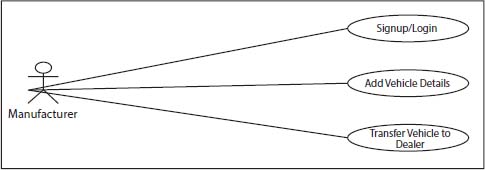
Figure 5.1 Use case of manufacturer.
Dealer: Figure 5.2 depicts the relationship of dealer and the various use cases.
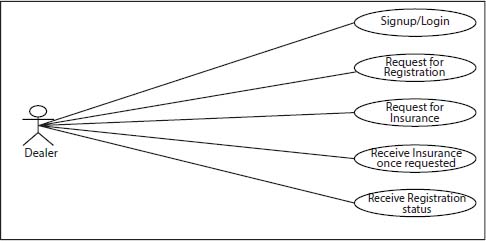
Figure 5.2 Use case of dealer.
Registration Authority: Figure 5.3 depicts the relationship of the Registration Authority and the various use cases.
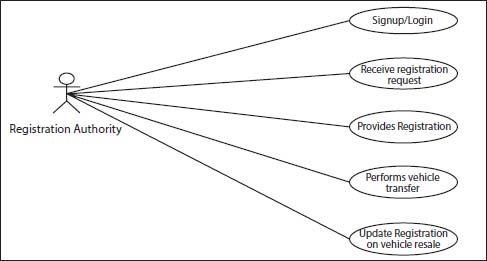
Figure 5.3 Use case of registration authority.
Police: Figure 5.4 depicts the relationship of police and the various use cases.
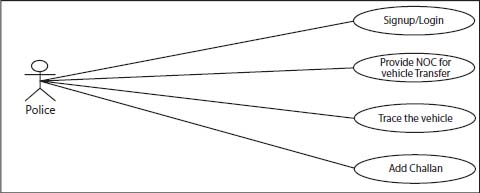
Figure 5.4 Use case of police.
Customer: Figure 5.5 depicts the relationship of customer and the various use cases.

Figure 5.5 Use case of customer.
5.4.5.2 Sequence Diagrams
A sequence diagram shown in Figure 5.6 basically depicts collaboration between articles in a sequential order. This diagram shows how the client enters into the network and a new block of transactions is created and finally added into the Blockchain network.

Figure 5.6 Sequence diagram.
5.4.5.3 System Design
System design is the way toward defining the engineering, modules, interfaces, and information for a system to fulfill indicated prerequisites.

Figure 5.7 High level view of architecture.

Architecture diagrams, data flow diagrams, activity diagram, ER diagram, and database schema diagrams are shown in Figures 5.7 to Figure 5.13.
5.4.5.4 Architecture Diagrams
The following is the system architecture design for the project.
5.4.5.4.1 Data Flow Diagram
Level 0: The following is the level 0 data flow diagram of the project.
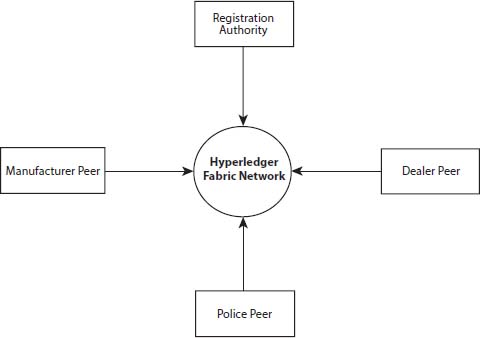
Level 1: The following is the level 1 data flow diagram of the project.
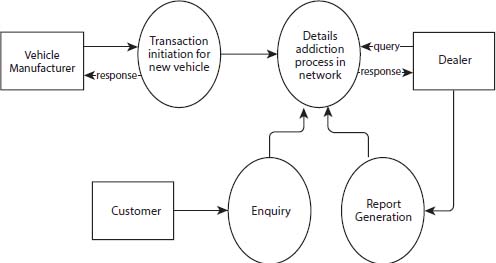
Level 2: The following is the level 2 data flow diagram of the project.
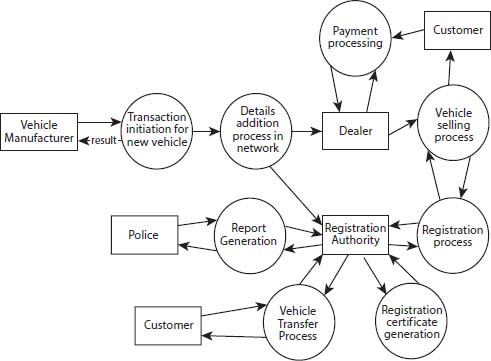
5.4.5.4.2 Activity Diagram
The following is the activity diagram showing the Login of the customer into the system.

5.4.5.4.3 ER-Diagram
The following is the entity-relationship diagram for the system.

Figure 5.13 Entity relationship diagram.
5.4.5.4.4 Database Schema Diagrams
Hyperledger Fabric supports two types of peer databases: LevelDB is the default state database embedded in the peer node and stores chain code data as simple key-value pairs; and CouchDB is an alternate state database that supports advanced queries when modeling chain code data values as JSON (as per Figures 5.14 to 5.19).
- Assets: The following is the schema for the asset data stored in the system.
- Manufacturer: The following is the schema for the manufacturer data stored in the system.
- RTO: The following is the schema for the RTO data stored in the system.
- Dealer: The following is the schema for the dealer data stored in the system.
- Police: The following is the schema for the police data stored in the system.
- Customer: The following is the schema for the customer data stored in the system.
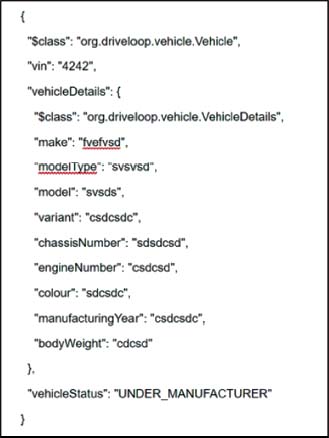
Figure 5.14 Schema for assets.
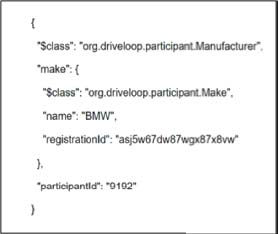


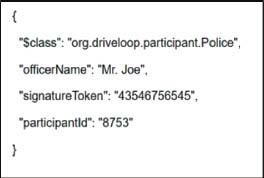
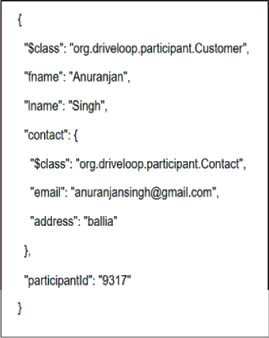
Figure 5.19 Schema for customer.
5.5 Software and Hardware Requirements
5.5.1 Software Requirements
- a) Ubuntu 20.04: Researchers’ team has chosen Linux operating system for its best support and user friendliness for this project.
- b) Hyperledger Fabric v0.20: It is used as a modular Blockchain structure, which serves as the basis for the development of Blockchain-based products, solutions and applications using plug-and-play components intended for use in private companies.
- c) Node JS v12.16.0-x64: It is been used to write down the back end logic, i.e., Chain code for the automation of the transactions.
- d) Docker 19.03.8: It is used as a service product that uses OS-level virtualization to deliver software in packages called containers.
- e) Postman 7.24.0: It is used to create, share, test, and document APIs. This is achieved because users can create and save simple and complex HTTP/s requests and their responses. This results in more effective and less tiring work.
5.5.2 Hardware Requirements
- a) Processor: Intel i5-6200U/Intel Core or better.
- b) GPU: 2.30 GHz
- c) Ram: 8 GB or more.
- d) Hard Disk: 20 GB or more.
- e) Input Device: Standard Keyboard, Mouse, and USB.
5.6 Implementation Details
Snapshots of interfaces 1are shown in Figures 5.20 to 5.27.
There are few snapshots from the project.
Figure 5.20 demonstrates the front page where the user can easily go to the platform and using the drive loop and different Blockchain techniques, it facilitates the user for automobile registration using authentic and transparent manner.

Figure 5.20 Front page.
Figure 5.21 depicts the main page on which user can upload the documents of automobile and can see the all parties which were involved earlier in whole transaction before the registration of this particular vehicle. It will be able to show the whole history of automobile.
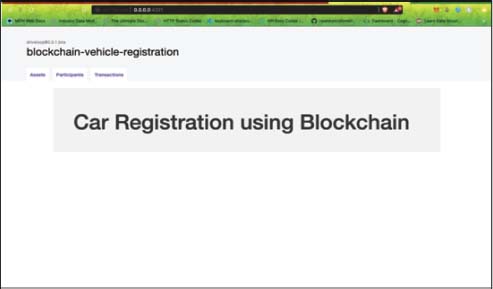
Figure 5.21 Main page.
Asset can be created by Figure 5.22 where the blocks will contain the records for automobile and whole details of all possible transactions will be stored for future purposes. This asset will be base information and will be authenticated by all parties for transparency.

Figure 5.22 Asset creation.
Figure 5.23 shows the model for manufacturer and displays the process of entering the unique and basic details of automobile by the manufacturer which will help to maintain the transparency and ease in smart contract and future transactions.
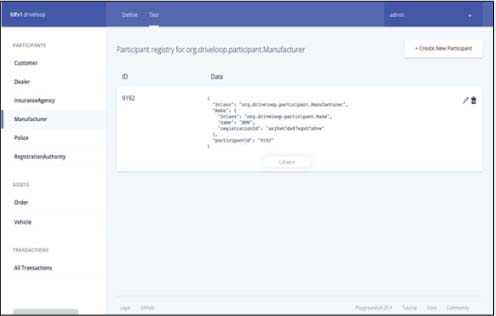
Figure 5.23 Model testing for manufacturer.

Figure 5.24 Transaction history.
In Figure 5.24, code in hyperledger shows the transaction history along with all necessary details for an automobile.
Figure 5.25 runs the possible test cases and checks the right functioning of the software.
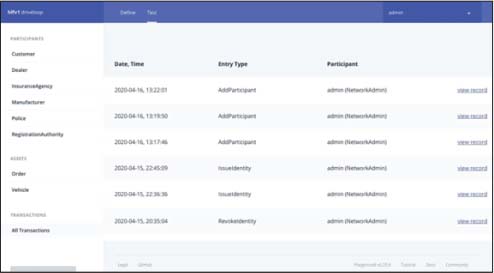
Figure 5.25 Process history.
Test Cases
To run the tests locally, we use a Docker file that builds our environment.
The Docker file would be something like the following:
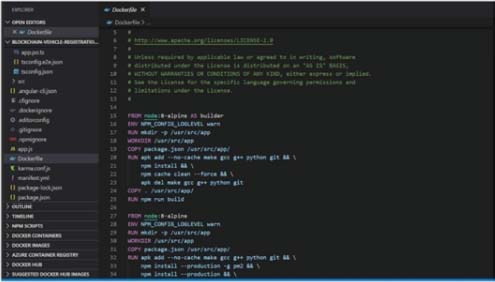
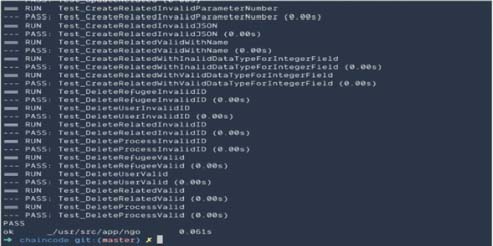
Figure 5.27 Test cases.
We will get a response like this if everything occurred nicely in Figure 5.27 after running all the test cases. The sample snippets are presented for the understanding of the readers.
5.7 Results and Discussions
DriveLoop enables all information to be accumulated into one place so that it can be easily accessed and managed. Vehicle registration, citations, insurance details, and everything else accruing to the vehicle in question are integrated on this platform. So, when you log in to find out something about one particular vehicle, what you will find is everything there is to know about it. A comprehensive, all-encompassing history is obtained. Anybody who is even remotely aware of the Blockchain technology will tell you how authentic it is.
It is structured in such a way that only authorized personnel can make entries or change records. Hence, there is no need to worry about any kind of tempering with the data or falsification of information.
From our research, we implemented the Blockchain technology to maintain trust, security, and clarity in the system. We used many technologies and one of the technologies is IoT, Ethereum. On the basis of latency of Blockchain, the throughput of Blockchain, and the accuracy of transactions, we tested our proposed idea.
For comparison with the existing state-of-the-art technologies, refer Table 5.1.
Table 5.1 Comparative analysis.
| Carchain | DriveLoop (our application) |
|
|
|
|
|
|
5.8 Novelty and Recommendations
Before we go on to talk about the problems of the process of vehicle registration, we first need to understand why vehicle registration is such an important aspect of automobile dealing. Car ownership of changes as many times as you can imagine. Whether you look at it in the terms of dealing in spare parts or in assembled vehicles, dealings by the middlemen or by the retailer who makes the final sale to a consumer, or in terms of the resale of a second-hand vehicle, there are a number of stakeholders who would very much want to know about all the history of the vehicle they are buying. Not to mention the insurance agencies, the police and other authorities, and, well, the government too needs to keep tabs on the automobiles for various reasons [9, 10].
The fact of the matter is that all these stakeholders need information about the vehicles, starting from its manufacturing story, covering its first sale, the accidents, if any, that it has been in, and any and all repairs and maintenance. This is crucial not just to maintain a track record of the vehicle in question to determine its market value but also for legal and insurance purposes [26].
The word automobile is derived from the Greek word auto which means “self” and the French word mobile which means “moving”. The significance of automobile is as follows:
- a) The increase in the demand for automobiles such as cars and other vehicles increase the income of driver of the automobile industry.
- b) In this foster age, people need to reach destinations rapidly. So, automobiles help one over here and it became popular. With the help of automobile, people from all over the world can travel anywhere. Automobiles play a vital role in the country’s socio-economic development.
- c) There is also a worldwide sharing in automotive industry of cars, vehicles, parts, and accessories that ranges from 15% to 40% in US, South Korea, etc.
- d) The automotive industry provides development of the taxable base and revenues of the state budget.
- e) It also influences scientific and technical progress [11].
5.9 Future Research Directions
There is a huge transformation in the urban development in 21st century because of the advanced technologies and various services. Nowadays, research activities become common for growing smarter cities. Smart city is the demanding solution of sustainability and urbanization. Nowadays, corruption is common and mostly it is paid by the poor. It is like a cancer that eats away at a citizen’s faith in the government. For example, smart cities may lead to injustice in the world where citizens or people are pushed to subaltern roles and it is regulated by technocratic governments. Increase in population in urban areas often leads to the problem of parking spaces and has been a big challenge for urban planners, architects, and administrators. So keeping all such views, an innovative solution is much more awaited and demanded [3].
There are few future remedies that can be carried out in this project.
- a) We intend to add certain features like location detection through GPS and addition of some more services according to user requirements afterward.
- b) We also intend to add an insurance party into our project.
- c) We also intend to increase the scalability of this project worldwide, i.e., beyond our country [22, 23].
5.10 Limitations
The study was a good learning process and was a very satisfying experience. Yet there are several factors that limited this researchers’ plan to study as every researcher desired limitations. Some are as follows:
- a) Access to documentation and information: The required data was not readily available. The process of documentation is not a continual practice.
- b) Automobile industry: Because of strict rules and many policies, the R&D and design executives are bound up in the automotive industry. Data sharing is very limited. To share the information openly and willingly is not considered good practice in the corporations.
5.11 Conclusions
The interesting parts, like fabricators, conventions, clients, and automobile agencies, can easily be facilitated for accrediting and updating the information of the vehicle in its secure function. The solution also guarantees that the information is more precise and completely sealed and transmits secure and economical form.
Performance Evaluation
- a) The performance of the service providers is based on ratings given to them by service users.
- b) The performance of the service users is based on ratings given to them by service providers.
- c) The performance of the overall website is based on feedback given to us by the users of the website.
- d) The reviews for the website will be taken from mentors, coordinators, and peers’ students.
IoT, big data systems, and mobility are some of the services programmers of smart cities. Smart parking is the crucial parts of smart city. Connected automobile with its advanced technology reduces the chances of accident and help drivers save time and gasoline in their limits. More urban our planet becomes, smarter the cities have to be. In the coming days, due to the advanced technology, the smart cities would prone to the smarter cities.
References
1. Agarwal, A., Goel, D., Tyagi, A., Aggarwal, A., Rastogi, R., A Smarter Approach for Better Lifestyle in Indian Societies, in: Progress in Advanced Computing and Intelligent Engineering., Advances in Intelligent Systems and Computing, vol. 563, K. Saeed, N. Chaki, B. Pati, S. Bakshi, D. Mohapatra (Eds.), pp. 355–362, Springer, Singapore, February 2018, https://doi.org/10.1007/978-981-10-6872-0_33.
2. Aggarwal, S., Rastogi, R., Mittal, S., A Novel approach for Communication Among Blind Deaf and Dumb People, in: Proceedings of 09th INDIACom; 2nd International Conference on Computing for Sustainable Global Development, 11th–13th March, 2015, pp. 605–610, https://ieeexplore.ieee.org/abstract/document/7100321.
3. Arora, S., R., Goel, P., Maini, J., Mallick, P., Increasing Efficiency in Online Studies through Web Socket, in: Proceedings of 3rd International Conference on Computing for Sustainable Global Development, 16th–18th March, 2016, pp. 509–512, https://ieeexplore.ieee.org/document/7724316.
4. Goel, D., Agarwal, A., Rastogi, R., A Novel Approach for Residential Society Maintenance Problem for Better Human Life, in: Communication and Power Engineering, R. Rajesh and B. Mathivanan (Eds.), vol. 1, pp. 177–185, 2016a.
5. Goel, D., Agarwal, A., Rastogi, R., A Novel Approach for Residential Society Maintenance Problem for Better Human Life. Int. J. Urban Design Ubiquitous Comput., IJUDUC, 1–8, Sept.-2016b, affiliated to the National Library of Australia, Global Vision School Publication, Sandy Bay, Tasmania, Australia, 4.
6. Gupta, R., Rastogi, R., Singh, A., A novel approach for vehicle tracking system for trafficjam problem, in: Proceedings of 09th INDIACom; 2nd International Conference on Computing for Sustainable Global Development, 11th–13th March, 2015a, pp. 169–174, https://ieeexplore.ieee.org/document/7100240.
7. Gupta, R., Rastogi, R., Mondal, P., Aggarwal, K., G.A. Based Clustering of Mixed Data Type of Attributes (Numeric, Categorical, Ordinal, Binary, Ratio-Scaled). BIJIT, 7, 2, 861–866, Jan-June 2014, http://bvicam.ac.in/bjit/issues.asp?issue=14.
8. Kaul, U., Rastogi, R., Agarwal, S., Sharma, P., Jain, S., A Novel D&C Approach for Efficient Fuzzy Unsupervised Classification for Mixed Variety of Data, in: Emerging ICT for Bridging the Future- Proceedings of the 49th Annual Convention of the Computer Society of India, CSI Volume 2. Advances in Intelligent Systems and Computing, vol. 338, Springer, Cham, pp. 553–563, 2015, https://doi.org/10.1007/978-3-319-13731-5_60, https://link.springer.com/chapter/10.1007/978-3-319-13731-5_60.
9. Khanna, A. and Anand, R., IoT based smart parking system, in: International Conference on Internet of Things and Applications (IOTA), IEEE, pp. 266–270, 2016.
10. Mejri, N., Ayari, M., Langar, R., Kamoun, F., Pujolle, G., Saidane, L., Cooperation versus competition towards an efficient parking assignment solution. IEEE International Conference on Communications (ICC), pp. 2915–2920, 2014.
11. Nigam, A., Rastogi, R., Mishra, R., Arya, P., Sharma, S., Security of Data Transmission Using Logic Gates and Crypt Analysis. CSI Communication 17, Delhi, India, June-2015, http://www.csi-india.org/communications/CSI%20June15%20Combine.pdf.
12. Nigam, A., Rastogi, R., Mishra, R., Arya, P., Sharma, S., Security of data transmission using logic gates and crypt analysis. proceedings of 09th INDIACom; 2015 2nd International Conference on Computing for Sustainable Global Development, 11th–13th March, 2015, pp. 101–105, https://ieeexplore.ieee.org/document/7100229.
13. Pham, T.N., Tsai, M.-F., Nguyen, D.B., Dow, C.-R., Deng, D.-J., A cloudbased smart-parking system based on Internet-of-Things technologies. IEEE Access, 3, 1581–1591, 2015.
14. Pilkington, M., Blockchain technology: principles and applications, Research handbook on digital transformations, SSRN Elsevier, Germany, p. 225, 2016.
15. Rastogi, R., Aggarwal, K., Mondal, P., An exhaustive review for infix to postfix conversion with applications and benefits, in: Proceedings of 09th INDIACom;2nd International Conference on Computing for Sustainable Global Development, 11th – 13th March, 2015, pp. 95–100, https://ieeex-plore.ieee.org/document/7100228.
16. Rastogi, R., Agarwal, S., Sharma, P., Kaul, U., Jain, S., Unsupervised Classification of Mixed Data Type of Attributes Using Genetic Algorithm (Numeric, Categorical, Ordinal, Binary, Ratio-Scaled), in: Proceedings of the Third International Conference on Soft Computing for Problem Solving. Advances in Intelligent Systems and Computing, M. Pant, K. Deep, A. Nagar, J. Bansal (Eds.), vol. 258, Springer, New Delhi, pp. 121–131, 2014, https://doi.org/10.1007/978-81-322-1771-8_11.
17. Rhodes, C., Blewitt, W., Sharp, C., Ushaw, G., Morgan, G., Smart routing: A novel application of collaborative path finding to smart parking systems, in: CBI, (1), pp. 119–126, 2014.
18. Rungta, S., Srivastava, S., Yadav, U.S., Rastogi, R., A Comparative Analysis of New Approach with an Existing Algorithm to Detect Cycles in a Directed Graph, in: ICT and Critical Infrastructure: Proceedings of the 48th Annual Convention of Computer Society of India- Vol. II, vol. 249, Advances in Intelligent Systems and Computing Springer, Cham, pp. 37–47, 2014, https://doi.org/10.1007/978-3-319-03095-1_5.
19. Sharma, R., Jain, A., Rastogi, R., A New Face To Photo Security Of Facebook, in: Proceedings of the Sixth International Conference on Contemporary Computing, Jointly Organized by Jaypee Institute of Information Technology & University of Florida, IC3, Aug. 8–10, 2013, pp. 415–420, https://ieeexplore.ieee.org/document/6612231.
20. Sharma, S., Rastogi, R., Kumar, S., A revolutionary technology to help the differently abled person, in: Proceedings of 09th INDIACom; 2nd International Conference on Computing for Sustainable Global Development, 11th–13th March, 2015, pp. 622–624, https://ieeexplore.ieee.org/document/7100324.
21. Sharma, P., Rastogi, R., Aggarwal, S., Kaul, U., Jain, S., Business Analysis and Decision Making Through Unsupervised Classification of Mixed Data Type of Attributes Through Genetic Algorithm. BIJIT, 6, 1, 683–689, Jan.-June, 2014, Special Issue of BIJIT on Fuzzy Logic. http://bvicam.ac.in/bjit/issues.asp?issue=11, Indexed in DBLP, published by Springer.
22. Shekhar, S., Rastogi, R., Mittal, S., Linear algorithm for Imbricate Cryptography using Pseudo Random Number Generator, in: Proceedings of 09th INDIACom, 2nd International Conference on Computing for Sustainable Global Development, 11th–13th March, 2015, pp. 89–94, https://ieeexplore.ieee.org/document/7100227.
23. Srivatava, S., Rastogi, R., Rungta, S., Yadav, U., A Methodology to Find the Cycle in a Directed Graph Using Linked List. BIJIT, 6, 2, 743–749, July-December, 2014, http://bvicam.ac.in/bjit/issues.asp?issue=12, Indexed in DBLP, published by Springer.
24. Wood, G., Ethereum: A secure decentralized generalized transaction ledger, Ethereum Project yellow paper, github.com, Istanbul, Turkey, vol. 151, pp. 1–32, 2014.
25. Wu, H., Li, Z., King, B., Miled, Z.B., Wassick, J., Tazelaar, J., A distributed ledger for supply chain physical distribution visibility. Information, 8, 4, 137, 2017.
26. Zheng, Z., Xie, S., Dai, H., Wang, H., Blockchain challenges and opportunities: A survey, Work Pap, Inderscience, Geneva, Switzerland, pp. 23–29, 2016.
27. Zyskind, G., Nathan, O. et al., Decentralizing Privacy: Using blockchain to protect personal data, in: Security and Privacy Workshops (SPW), IEEE, pp. 180–184, 2015.
28. Kumar, A., Payal, M., Dixit, P., Chatterjee, J.M., Framework for Realization of Green Smart Cities Through the Internet of Things (IoT), in: Trends in Cloud-based IoT, pp. 85–111, 2020.
29. Son, L.H., Jha, S., Kumar, R., Chatterjee, J.M., Khari, M., Collaborative handshaking approaches between internet of computing and internet of things towards a smart world: a review from 2009–2017. Telecommun. Syst., 70, 4, 617–634, 2019.
- *Corresponding author: [email protected]; ORCID: https://orcid.org/0000-0002-6402-7638
